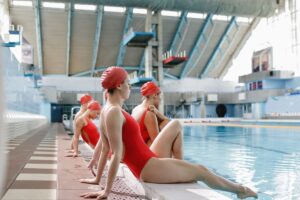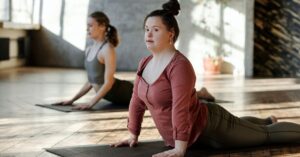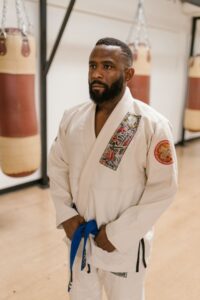5 Fun Physical Activities That Promote Better Autism Health
Physical activities can play a crucial role in the development and well-being of individuals with autism. Not only do these activities improve physical health, but they can also have significant positive effects on social and communication skills and can improve mental health as well. Research has found that engaging in regular exercise can help individuals on the spectrum develop better coordination, balance, and motor skills. This is important as these skills are often challenging. 
Fun physical activities provide a unique opportunity for individuals with autism to interact with their peers in a natural setting. Whether it’s playing team sports or participating in group fitness classes, these activities encourage social engagement and can enhance both verbal and non-verbal communication skills. In addition, the structured nature of many physical activities provides predictability and routine that can be comforting for individuals with autism who thrive on consistency.
Interestingly, studies have also indicated that fun physical activity may positively affect cognitive functioning in individuals with autism. Engaging in aerobic exercises has been found to boost attention span, improve problem-solving skills, and increase overall cognitive performance. These findings suggest that incorporating regular physical activities into intervention strategies for those on the spectrum may not only promote general health but also aid cognitive development and mental well-being.
Benefits of Fun Physical Activities for Individuals with Autism
One major benefit of fun physical activities is the positive impact on sensory integration. Many individuals with autism have difficulties processing sensory information, leading to difficulties with sensory integration. Physical activities such as running, jumping, and swinging can help regulate sensory input and improve sensory modulation, allowing them to better navigate and respond to stimuli in their environment.
In addition to enhancing sensory integration, physical activities also offer an outlet for self-expression and emotional regulation. Exercise has been shown to release endorphins in the brain, providing a natural mood boost and reducing stress levels.
For individuals with autism who may struggle with emotional regulation or expressing themselves verbally, engaging in physical activities offers an alternative channel for emotional release and expression.
Read about The Surprising Link: Autism Traits in Adults and Physical Fitness.
Types of Fun Physical Activities that Promote Improved Autism Health
For autistic individuals who may struggle with social interactions, group activities such as team sports or group fitness classes can be highly beneficial. These activities provide opportunities for them to work on communication skills, cooperation, and turn-taking in a structured and supportive environment. Additionally, being part of a team or group helps foster a sense of belonging and camaraderie among peers.
Individuals with autism often have unique sensory needs that can impact their participation in physical activities. Activities like swimming or water-based sports can be particularly advantageous as they provide deep pressure input while minimizing sensory overload. Similarly, yoga or martial arts classes specifically designed for individuals with autism focus on controlled movements, breathing techniques, and self-regulation strategies that promote body awareness and calmness.
Here are 5 fun physical activities that are generally popular physical exercise/activity options for individuals with autism, both adults and children.
Top 5 Fun Physical Activities for Better Autism Health
Swimming.
Swimming is an excellent physical activity for children and adults alike with ASD.
 Swimming is a low-impact exercise that can help autistics build muscle tone and improve their coordination. It is also a sensory-friendly activity that can provide a calming effect on the body.
Swimming is a low-impact exercise that can help autistics build muscle tone and improve their coordination. It is also a sensory-friendly activity that can provide a calming effect on the body.Swimming has been shown to reduce stereotypical behaviors and even increase eye contact. Parents can enroll their child in swimming lessons or visit a local pool for a family swim.
Swimming can be a great way for parents to bond with their child and provide a fun and therapeutic activity. Knowing how to swim and enjoy water is a skill that will carry a person throughout their adult life.
Yoga.
Yoga is another fun physical activity that can help individuals with ASD improve their physical and mental well-being.
 Yoga is a gentle form of exercise that can help those on the spectrum improve their flexibility and balance. It can also promote relaxation and reduce stress.
Yoga is a gentle form of exercise that can help those on the spectrum improve their flexibility and balance. It can also promote relaxation and reduce stress.Yoga has been shown to improve motor skills, social interaction, and communication for neurotypical and neurodiverse individuals alike. Parents can practice yoga at home with their child or attend a family-friendly yoga class. Yoga can be a fun and interactive way for parents and their child to connect and promote relaxation.
Yoga is another skill and form of physical activity a person can carry with them throughout their life. There are numerous adult yoga classes offered in most communities. In addition, it is a practice that can be done almost anywhere at any time.
Martial arts.
 Martial arts (and there are many different varieties to choose from) is an excellent physical activity that can help individuals with ASD improve their coordination, focus, and discipline.
Martial arts (and there are many different varieties to choose from) is an excellent physical activity that can help individuals with ASD improve their coordination, focus, and discipline.Martial arts can also provide a social outlet and a sense of community. Martial arts can be a great way for children and adults alike with ASD to build self-confidence and develop friendships with peers who share similar interests.
Parents can enroll their child in a martial arts class or practice basic moves at home. Martial arts can provide a structured environment that can help children with autism learn self-regulation and improve their social skills. Martial arts promotes motivation through the achievement of different levels, and these can be continued from childhood to adulthood.
The reward system by earning belts and ceremonies associated with the honor is something that often appeals to autistic children and adults alike, making it a great example of a fun physical activity. In addition, most martial arts philosophies center around respect, which is a positive way to gain perspective about following a person’s instructions and following appropriate protocols. If a person does not want to spar, there are many contact-free options affiliated with martial arts programs and shouldn’t be considered a deterrent.
Cycling.
Cycling is a fun and low-impact form of exercise that can help children with autism improve their cardiovascular health and coordination. Cycling can be an activity that individuals can enjoy with their peers, promoting social interaction and teamwork. Cycling can be a great way to explore their environment and develop independence.

If an individual with autism has challenges with riding a bike, no worries! There are other bike options available, including adaptive styles, to help with any balance issues.
Parents can go on family bike rides or enroll their child in a cycling program. Cycling can be a fun and interactive way for children with ASD to improve their physical fitness and promote social interaction. There are also many cycling groups for adults, as a way to explore areas and continue to exercise when older.
Dancing.

Dancing is a fun physical activity that can help children with ASD improve their coordination, balance, and social skills. Dancing can also provide a creative outlet and boost self-esteem. Dance therapy has been shown to improve social communication, imitation, and motor coordination in children with ASD.
Parents can enroll their child in a dance class or practice basic moves at home. Dancing can be a fun and interactive way for parents and their child to connect and promote physical and mental well-being.
Knowing how to dance socially is a good skill to learn for teens and adults as they navigate adult activities as well.
In addition to these fun physical activities, parents can encourage their children with ASD to engage in outdoor play, such as playing catch or kicking a ball. Outdoor play can help children develop their social skills, build strength, and improve their mood. Outdoor activities can provide children a break from the structured environment of school or therapy sessions, and allow them to explore their environment in a less structured way.
It is essential to note that each child or adult with autism is unique, and what works for one person may not work for another. Parents or grown individuals should work with their therapists and educators to find physical activities that are appropriate for their individual needs and interests. It is also essential to start with activities that are not overwhelming and gradually increase the intensity and duration of the activity.
It is also crucial to create a sensory-friendly environment for children with autism to engage in physical activities. Children with autism may have sensory sensitivities to noise, bright lights, or specific textures. Parents should consider these sensitivities when choosing activities and environments for their children to engage in physical activities. Providing a safe and comfortable environment can help autistics feel more at ease and encourage them to engage in fun physical activities to help with their overall growth.
Even taking walks on nature trails can be good for the soul. Remember, physical activity does not have to cost a thing, and its benefits can be tremendous for anyone. Engaging in physical activities can provide individuals with a break from the structured environment of therapy sessions, school, work, and or routines in general and promote physical and mental well-being.
Why Better Physical Health Is Important to Me
As for me, I have enjoyed all the activities listed above except dancing. I haven’t learned how to dance, although it is something I hope to learn in the future.
However, I have been swimming for almost my entire life, my parents first enrolled me in swim class when I was a little kid after I fell into a pool one time and that made my mom decide I should know how to swim. I have always been pretty good at it as my mom will tell you and I have always enjoyed it. It feels relaxing and enjoyable to swim and it’s also good for your body.
In addition, I participated in Tae Kwon Do when I was growing up for several years. I was pretty good at it and I liked my teacher, but when he moved away for college I just kind of lost interest in it. I regret I didn’t stay in it and may take it back up again at some point. It was a good way to exercise and enjoy some fun physical health, so I recommend anyone to try martial arts, as it can be a really good experience for you.
Other Common Autistic Behaviors
There are many behaviors associated with having autism. Keep in mind that everyone presents differently, which is why it is caused a spectrum disorder. However, there are common autism behaviors. Learn more about them.
- Autism and Eye Rolling: Why It’s Odd, But Perfectly Okay
- Eye Contact Avoidance: 8 Best Ways to See Eye-to-Eye
- 10 Proven Techniques for Managing Autism and Sensory Issues
- Understanding Neurodiversity: Uprising of the Neurodivergent
- Autism and ADHD: Making Sense of the Overlap
- Autism Masking & Code Switching: How to Redefine Acceptance
- Autistic Stimming Behaviors: Why We Do and How It’s Important
- OCD and Autism: Could You Have One Condition or Both?
- Autism in Sports: Hyper-Focus Can Be A Commanding Competitive Advantage